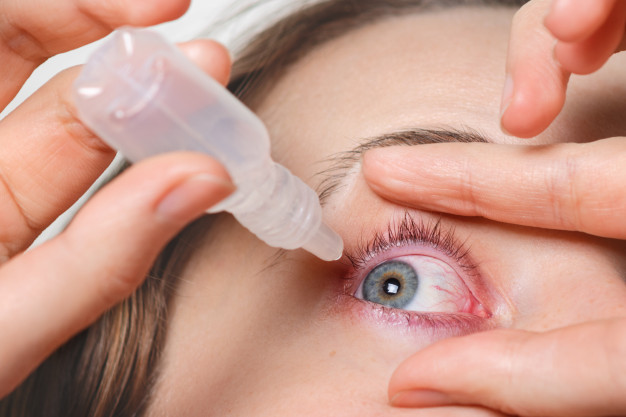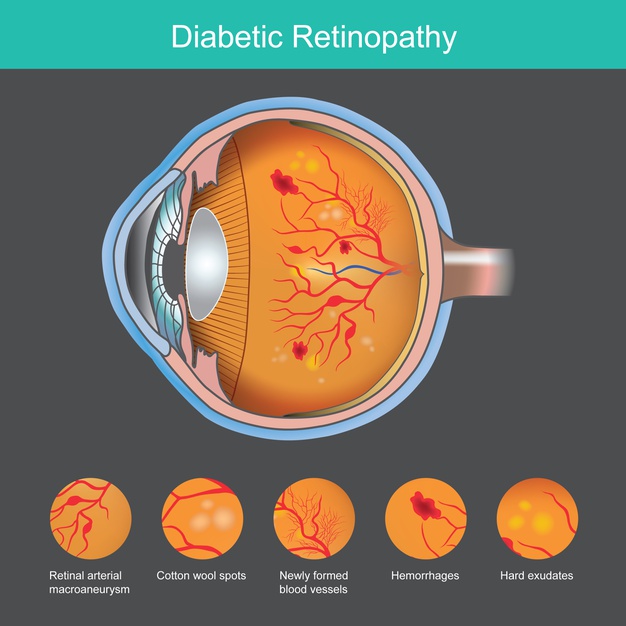Eye Disorders
Dry Eyes
Do your eyes sometimes feel dry and irritable ?
With the changes in the environment and air pollution, more people are suffering from dry eye or dry eye related symptoms. Make sore, burning eyes a thing of the past.
Investigate and treat your dry eyes at Qunin Opticians. Our optometrists and opticians have specific tests available to check for dry eye. Dry eye should be detected during a sight examination, we can advise you about different treatment options to keep your eyes more comfortable in order to avoid that sore, burning feeling. We also have a series of tests which may help detect other eye conditions such as high eye pressure, glaucoma or macular degeneration which may not yet be symptomatic but could result in future vision loss.

Glaucoma
What is Glaucoma?
Glaucoma causes damage to the optic nerve. The optic nerve carries the images we see to the brain. It is like an electric cable containing about 1.2 million wires. Glaucoma can damage the nerve fibers, causing blind spots to develop. Many people know that glaucoma has something to do with pressure inside the eye – intraocular pressure (IOP). Pressure builds up in the eye when the clear liquid (the aqueous humour), which normally flows in and out of the eye, is prevented from draining properly. This can happen in different ways, depending on the type of glaucoma. The resulting increase in pressure within the eye can damage the optic nerve.

What causes Glaucoma?
Ophthalmologists used to think that high intraocular pressure was the main cause of optic nerve damage in glaucoma, but we now know that even people with “normal” IOP can experience vision loss from glaucoma (“normal tension glaucoma”). Some people with high intraocular pressure never develop the optic nerve damage of glaucoma, but they need to be followed carefully by an ophthalmologist, as they are considered “glaucoma suspects”.
Elevated IOP
Elevated IOP is still considered a major risk factor for glaucoma, though, because studies have shown that the higher the IOP is, the more likely optic nerve damage is to occur.
Clinically, many people with glaucoma have no symptoms. Because the visual loss is very slow, they are often unaware of their decreasing field of vision. Glaucoma usually affects both eyes. Occasionally, if the eye pressure is high enough, the person may feel discomfort or pain in their eye(s). The eyes may become bloodshot during this period. Glaucoma Risk Factors
- Old age (prevalence increases rapidly in those 40 years old)
- Blood relative with glaucoma
- Nearsightedness (myopia)
- Diabetes
- High blood pressure
Our practice is fully equipped with the very latest instrumentation to detect glaucoma at the earliest possible stage. We also have a visual fields machine that will enable us to detect early field loss induced by glaucoma. Our practitioners will examine the back of your eyes. Measuring eye pressure is a standard test in our practice once you are over 40. We can perform this in a number of ways – with your comfort in mind.
Diabetic Retinopathy
When diabetes affects small blood vessels in the part of your eye known as the retina, it is known as diabetic retinopathy. Diabetic retinopathy left untreated is one of the most common causes of blindness in the working population. It does not generally affect your sight until the changes have become quite advanced. However, in this situation the effectiveness of laser treatment at reducing further sight loss is less effective.
You are at increased risk of suffering from diabetic retinopathy if you:
- Have had diabetes for some time
- Have blood glucose levels that are poorly controlled
- Have high blood pressure
- Are pregnant
- Are taking insulin
Many countries have diabetic screening programmes. In Ireland there have been on-going discussions and now a pilot screening programme is in place. However it is still up to you to take responsibility for your own health and have the screening carried out.
Diabetic Screening at Quinn Opticians
In our optician practices, all of our testing rooms are equipped with the latest technology in fundus photography. This is one of the key methods of recording, viewing and tracking changes to the back of the eye. Our enhanced eye tests include a test for diabetic retinopathy. The sight examinations also include checks for other age related conditions like macular degeneration and glaucoma. An optometrist or optician at our branches will be able to suggest a course of action for you if you suffer from diabetic retinopathy. If you are at risk of diabetic retinopathy or you know someone who is, please contact us for more information.

Macular Degeneration
85% of all Macular Degeneration (or AMD) are dry cases and occur in the over 55′s.
This is an example of how your vision might be impacted if you had AMD
During the early stages of the condition, you may notice difficulty reading small print and seeing fine detail. At this stage, you may find stronger reading lenses and a good quality reading light will help your vision.
While no treatment is available for Dry Macular Degeneration, we recommend vitamin supplements with high doses of antioxidants, lutein and zeaxanthin, to attempt to slow the progression. The earlier the disease is detected the better chance of slowing its progression.

The “wet” form of advanced AMD, causes vision loss due to abnormal blood vessel growth
If left untreated a rapid loss of vision will occur. Treatments with new drugs, called anti-angiogenics or anti-VEGF (anti-Vascular Endothelial Growth Factor) agents, can cause regression of the abnormal blood vessels and improvement of vision when injected directly into the vitreous humor of the eye.
Check yourself: The Amsler Grid
The Amsler Grid may be helpful in revealing signs of wet Age-related Macular Degeneration (AMD). It is not a subsititute for regular eye tests.

Directions:
- If you wear glasses or contact lenses for reading, put them on but do not wear varifocals or distance glasses
- Stay at approximately 12 inches (30 cm) from the screen in front of your eyes, or you may print it and hold it directly in front of your eyes in a well lit room
- Cover one eye with your hand and focus on the centre dot with your uncovered eye. Repeat with your other eye
- If you see wavy, broken or distorted lines, blurred or missing areas of the vision, you may be displaying symptoms of AMD and should contact your Optician within the week.
